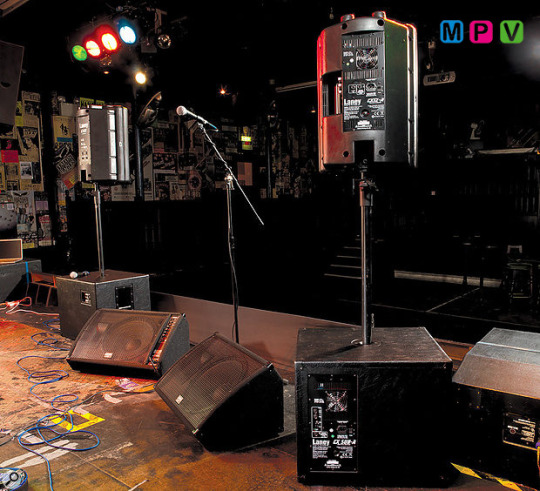#audio visual as a service
Explore tagged Tumblr posts
Text
Event Production Services in Delhi | MPV Sound
Professional Event Production Services in Delhi combine creativity, technical expertise, and coordination to deliver seamless corporate events and weddings.

#Event Audio Visual Services in Delhi#Event Production Services in Delhi#Event Sound Solutions in Delhi#Event Lighting Design in Delhi
2 notes
·
View notes
Text
North State Audio Visual Inc Hollow Court Chico, CA
Enhance your event with exceptional audiovisual services provided by North State Audio Visual in Redding. They deliver comprehensive audiovisual services in Redding, ensuring that every detail of your event's sound and visual elements is meticulously managed. From setting up advanced sound systems to configuring state-of-the-art visual displays, their team handles everything with professionalism and expertise. They cater to both small gatherings and large-scale productions, ensuring that your audience enjoys an unforgettable experience. Focusing on quality and reliability, their services are designed to meet your specific needs and exceed your expectations.
2 notes
·
View notes
Text
Reliable TV Repair Services in Botanic Ridge by Datt Electronics
If your television isn’t working as it should, it’s time to turn to a trusted solution in Botanic Ridge. At Datt Electronics, we specialize in providing top-notch TV repair services Botanic Ridge to restore your entertainment hub to perfect working condition. With years of expertise, a team of experienced technicians, and a commitment to customer satisfaction, we ensure your TV is repaired…
#Audio Visual Instruments#Audio Visual Instruments Melbourne#Audio Visual Instruments Repair Melbourne#Circuit Board Repairs in Melbourne#TV Repair Botanic Ridge#TV Repair in Botanic Ridge#TV Repair in Melbourne#TV Repair Services in Melbourne#TV Repair Services Melbourne
1 note
·
View note
Text
#IT solutions company in Dubai#Techbee Dubai#it amc services in dubai#united arab emirates#meeting room solutions#audio visual solutions
2 notes
·
View notes
Text
vimeo
LunisSystems is an audio system installation company in Fort Lauderdale Call for any of your audio visual service needs.
2 notes
·
View notes
Text
Professional Audio Visual Equipment Rental Services | United AV Rentals
We are your go-to source for professional audio visual equipment rental services. No matter the occasion, United AV Rentals has comprehensive audio and lighting equipment to elevate your event and ensure its success. Explore our website now to get more details!
#AV Equipment Rentals#Audio Visual Equipment Rental Services#used audio equipment for sale#lighting equipment rental#corporate av services#dance floor rentals#United AV Rentals
1 note
·
View note
Text
7 Tips For Selecting the Right AV Solutions Company For Your Business

To make any business thrive, effective communication systems are a must. They link your organisation to the external world, making your business more efficient. From telephonic communications to cutting-edge monitoring, dynamic video conferencing, surveillance systems, modern presentation instruments, and state-of-the-art digital signage, the options are limitless; you can choose any or all based on your needs.
Indeed, the journey begins with the installation of the most suitable AV solutions for your business. However, it doesn't end there; maintenance is just as crucial. To ensure that your audio-video systems continue to operate at their peak, you must have the right Audio Visual solutions company by your side.
However, finding the right AV solutions company is not an easy task, especially with so many companies claiming to be the best. And we understand that. So, here are the tips that can assist you in making the right decision. Let’s swoop in…
1. Define Your Needs
Before you start searching for an AV solutions provider, it's essential to understand your specific needs. What type of AV equipment or systems do you require? Are you looking for conference room solutions, digital signage, or a complete audio-visual overhaul? By defining your needs, you'll be better prepared to communicate your requirements to potential service providers.
2. Industry Expertise
Different industries have different AV requirements. Look for a commercial AV installation company that specializes in serving businesses similar to yours. Whether you're in hospitality, healthcare, education, or corporate settings, a provider with industry-specific knowledge can offer tailored solutions that meet your unique demands.
3. Evaluate Their Portfolio
A reputable AV solutions company should have a diverse portfolio showcasing their previous projects. By checking out their portfolio, you can gain insights into the quality of their work.
4. Consider Their Reputation
Online reviews, testimonials, and word-of-mouth recommendations can provide valuable insights into a company's reputation. Look for feedback from businesses that have used their services. A solid reputation is an indicator of trustworthiness and competence.
5. Technical Expertise
An AV solutions company must have a team of professionals who are seasoned in the latest technologies and trends in the AV industry. Ask about the credentials and training of their technicians, engineers, and designers. Their technical expertise assures that your AV systems will be devised, installed, and maintained to the highest standards.
6. Customization Capability
Every business is unique, and your AV needs may vary greatly from others. Choose a provider that offers customisation options while offering audio-visual installation services, allowing you to tailor your AV solutions to fit your specific requirements. The ability to adapt and design systems that integrate seamlessly with your existing infrastructure is invaluable.
7. Maintenance and Support
Just like electrical maintenance is always required, the AV installation system also demands regular maintenance to ensure they function optimally. Inquire about the maintenance and support services offered by the AV solutions company. Do they provide scheduled maintenance, troubleshooting, and emergency support? A reliable support system is critical to minimise downtime.
In all, picking the right AV solutions company for your business can greatly impact your operations and overall success. Hope these tips help you make an informed choice that aligns with your business needs as well as goals.
Choose A Leading AV Solutions Company…
At Voltec Services, our in-house audio-visual and electrical teams provide complete automation solutions, collaborating with architects and builders. We work with diverse brands, offering reliable options to suit budgets. Trusted by national companies, our qualified technicians ensure clean, timely work. We also offer post-installation service and stay updated on industry advancements.
Have queries? Get in touch with us at (07) 4426 1919 today!
Original Source - https://www.voltecservices.com.au/blog/item/7-tips-for-selecting-the-right-av-solutions-company-for-your-business
#AV Installation#Audio Visual Solutions#Audio Visual Installation Services#Commercial AV Installation#AV Solutions Company
1 note
·
View note
Text
top 5 event management companies in Delhi,
Your Perfect Event, Crafted with Care
With a focus on personalized service and meticulous attention to detail, we create events that reflect your style and personality. Let us take the stress out of event planning so you can enjoy every moment.
Event Management Services
Our event management services are designed to transform your vision into a reality, creating unforgettable experiences that resonate with your audience. We handle every detail meticulously, from initial planning and venue selection to logistics and on-the-day coordination. Our dedicated team works tirelessly to ensure that each event runs smoothly, allowing you to focus on engaging with your guests and achieving your goals. With years of experience and a passion for excellence, we are committed to delivering events that exceed expectations and leave a lasting impression.
Our collaborative approach means we work closely with you to understand your vision and bring it to life with flawless execution. From innovative themes and stunning decor to cutting-edge technology and seamless coordination, we ensure every element contributes to the overall success of your event. Trust us to be your partner in creating memorable experiences that drive engagement and achieve remarkable results.
Event Management Services And Solutions We Offer
Hybrid Events & Conferences
Seamlessly integrate in-person and virtual elements to create dynamic and engaging event experiences.
Complete Audio-Visual Solutions
Provide state-of-the-art audio and visual equipment and services to enhance the ambience and impact of your event.
Concept Creation & Set Designs
Develop unique and captivating event concepts and designs that bring your vision to life.
Venue Sourcing & Collaboration
Source the perfect venue for your event and collaborate with partners to ensure a seamless experience.
Event Production & Thematic Decor
Oversee every aspect of event production, from logistics to thematic decor, to create immersive and memorable experiences.
Stall Designs & Production
Design and produce eye-catching stalls and exhibition booths that attract attention and engage attendees.
Engagement Activities & Activation
Organize interactive and experiential activities to encourage participation and foster meaningful connections.
Scripting and production of AVs
Create compelling scripts and produce high-quality audio-visual content that enhances the overall event experience.
Make It Memorable
We look forward to serving you and creating memorable experiences together. Contact us today to discover how we can tailor our services to your needs.
Contact Us

Noida
Office No. 1014, 10th Floor, Wave Silver Tower, Sector - 18, Noida - 201301
+91 93110 43300

Mumbai
Office No. 17, Mistry Industrial Estate, MIDC, Andheri East, Mumbai 400 093
+91 77382 92438

Bengaluru
#161, Narayan Pillai Street, Bharathi Nagar, Bangalore - 560001
+91 97411 11046
#Event Management#Corporate Events#Exhibition Management#Brand Activations#Conference Planning#Digital Marketing Services#Virtual Event Platforms#Audio Visual Services
0 notes
Text
Audio Visual Solutions LLC
Audio Visual Solutions LLC, a division of Unassailable Solutions LLC, delivers cutting-edge AV technology for businesses, events, and institutions. Specializing in custom integration, design, and support, we provide seamless audio and visual experiences that elevate communication and engagement. Trust our expert team for reliable, innovative, and tailored AV solutions that meet your unique needs.

#audio visual solutions usa#unassailable solutions llc#unassailablesolution#audio visual consulting services
1 note
·
View note
Text
How Voice Over Services Build Brand Consistency | Studio52
In today’s competitive market, a consistent brand voice is essential. This blog explains how professional voice over services contribute to brand identity across digital channels. From IVR and commercials to corporate narration, Studio52’s multilingual voice talents ensure your message is clear, trustworthy, and aligned. Trusted across the MENA region, Studio52 empowers brands to sound as strong as they look.

Discover how professional voice-over services help build a consistent brand identity. Studio52 offers expert multilingual voice overs for IVR, commercials, eLearning, and corporate videos—ensuring clarity, trust, and alignment across every platform. With 47+ years of experience, we help brands across Dubai and the MENA region enhance their voice and audience connection.
#audio visual production company#audio recording studio#dubai recording studio#production houses dubai#audio recording studio in dubai#audio production services in dubai#audio production specialist in uae#audio production dubai#voice over recording studio#voice recorder dubai#voice over artist rates#voice over for commercials#corporate voice over recording
0 notes
Text
Benefits of Hiring Professional Audio Visual Event Services Dubai for Large-Scale Events
Does planning a big event in Dubai sound familiar? Whether it's a corporate conference, product launch, trade show, or award ceremony, the importance of audio visual (AV) cannot be overstated. AV is instrumental in delivering an epic experience, from sound systems to LED displays; it is vital to engaging and enraging the measurements of your audience and keeping them satisfied throughout the event.

In a city like Dubai—renowned for hosting world-class events—partnering with the right AV provider is key. That's where ASAP Events offers top-tier Audio Visual Event Services in Dubai designed to elevate your production to the next level.
Why AV Services Are Crucial for Large-Scale Events
Large events involve complex logistics, diverse audiences, and high expectations. Poor sound quality, dim visuals, or technical glitches can undermine your brand image and disengage your attendees.
Professional AV support ensures:
Reliable performance from start to finish
Seamless integration with stage design and event flow
Engagement through stunning visuals and immersive soundscapes
Hiring experienced AV professionals like ASAP Events provides peace of mind, allowing you to focus on the big picture while the technical side runs flawlessly in the background.
Key Benefits of Hiring Professional AV Event Services in Dubai
1. Access to Cutting-Edge Equipment
From HD projectors and wireless microphones to LED video walls and digital mixing consoles, professional AV companies give you access to top-of-the-line gear. Instead of purchasing or piecing together outdated equipment, you get the best tools tailored to your event’s scale and objectives.
Whether you’re hosting a 500-guest gala or a 5,000-attendee conference, ASAP Events offers AV equipment rental in Dubai that meets global standards and ensures visual and audio excellence.
2. Expert Technical Support On-Site
Large-scale events leave no room for error. Professional AV teams provide:
Setup and teardown services
Live monitoring and troubleshooting
Synchronization between video, audio, and lighting
ASAP Events supplies experienced technicians who work discreetly and efficiently behind the scenes, offering live event AV support so your production runs smoothly from start to finish.
3. Seamless Integration With Event Production
Audio visual elements must align with every part of your event—from lighting cues to keynote transitions. AV professionals collaborate with stage managers, event coordinators, and venue staff to create cohesive experiences.
ASAP Events works hand-in-hand with planners and producers to ensure all AV components are harmonized with the broader event strategy.
4. Customized Solutions for Any Venue or Audience Size
Whether you’re transforming a hotel ballroom, an outdoor space, or an exhibition center, a one-size-fits-all AV setup won’t cut it. Professional AV companies assess venue acoustics, lighting conditions, and audience dynamics to design a custom solution.
With deep knowledge of local venues, ASAP Events delivers large-scale event solutions that are scalable, adaptable, and perfectly suited to your environment.
5. Time and Cost Efficiency
Although DIY AV setups may be perceived as economical, you can run into problems and last minute issues that may result in subpar experience or quality. Hiring a professional or working with a professional AV integrator eliminates the need to worry about having to make emergency repairs or replacing equipment in a rushed way. This ultimately helps save you time and money.
ASAP Events optimizes both budget and performance by offering comprehensive packages, timely execution, and scalable options.
6. Enhanced Audience Engagement Through Technology
The right AV setup can dramatically boost attendee interaction. Think:
LED screen rentals in Dubai for high-impact visuals
Live streaming and hybrid meeting support
Interactive audience polling and feedback tools
ASAP Events integrates cutting-edge event technology in Dubai to keep your audience immersed, informed, and impressed.
Why Choose ASAP Events for AV Services in Dubai
ASAP Events is one of Dubai’s leading AV and event production companies, known for delivering exceptional audio visual solutions across various industries. Here's why top brands and event organizers trust them:
Years of experience in high-profile events
A large inventory of premium AV gear
Skilled in-house technicians and engineers
Proven track record of reliability and professionalism
Competitive pricing with flexible service packages
From exhibitions at the Dubai World Trade Centre to rooftop galas in Downtown Dubai, ASAP Events has the expertise and infrastructure to meet your needs.
Tips for Working With an AV Event Partner
To get the most out of your AV provider, keep these best practices in mind:
Plan Early: Book your AV partner in advance to lock in availability and conduct site visits.
Define Your Goals: Be clear about your event objectives and required deliverables.
Test Thoroughly: Conduct sound checks and visual tests to ensure every element works perfectly.
Communicate Continuously: Maintain open channels between your AV team and your production crew.
Conclusion
Engaging the services of an audio visual event professional is a valuable asset to the success of your event in Dubai. You will be getting everything operationally smoother, more convincing presentations, and greater experiences for your guests. With the help of someone you can trust, such as ASAP Events, your event will not only be successful, it will be beyond your wildest vision!
🎯 Looking to elevate your next big event in Dubai?
Contact ASAP Events today for professional AV services that guarantee impact, precision, and peace of mind.
Frequently Asked Questions (FAQs)
1. What types of AV equipment does ASAP Events offer?
ASAP Events provides a wide range of AV gear, including LED screens, sound systems, microphones, projectors, lighting, and staging equipment.
2. Do you provide technicians during the event?
Yes. ASAP Events offers full on-site technical support, including setup, real-time monitoring, and troubleshooting.
3. Can you handle outdoor or hybrid events?
Absolutely. ASAP Events offers customized AV solutions for outdoor venues and hybrid (in-person + virtual) events.
4. How far in advance should I book AV services?
It’s best to book at least 4–6 weeks in advance to secure availability and allow time for planning and equipment prep.
5. What areas do you service in Dubai?
ASAP Events provides AV services across Dubai, including Business Bay, Downtown, Deira, JLT, Dubai Marina, and major event venues.
0 notes
Text
Commercial Sound Solutions in Delhi | MPV Sound
Commercial Sound Solutions in Delhi provide tailored, high-quality audio and AV integration services essential for businesses like offices, hotels, retail stores, and educational institutions.

#Commercial Sound Solutions#Sound Solution Provider#Professional Sound System Solutions#Event Sound Solutions#Audio Visual Equipment Rental Services
1 note
·
View note
Text
Staging Solutions for Corporate Events in Malaysia

Professional Conference Staging Solutions in Malaysia
In today’s demanding corporate sector, delivering memorable events has become a necessity especially, when you are hosting a corporate conference, or an immersive trade exhibition, or a grand scale live performance, your staging forms the backbone of audience engagement. At AV Solutions, we turn standard venues into remarkable event spaces with our end-to-end staging solutions.
At AV Solutions, we don’t just set up equipment, we craft experiences that move audiences. We combine technical expertise with creative vision to deliver seamless, professional-grade setups. Our systems deliver reliable audio clarity for every presentation strategic lighting that enhances every moment, and intelligent staging that maximizes your venue’s potential.
In this blog, we’ll showcase how our Corporate Event Staging services in Malaysia can transform conferences, exhibitions, and live performances, delivering exceptional results that go beyond expectations. Learn how cutting-edge technology, meticulous execution, and innovative staging solutions create unforgettable event experiences. Our Corporate Event Staging, Malaysia services are designed to create impactful environments that facilitate seamless communication and information sharing.
Advanced Audio Visual Integration
Our staging solutions deliver consistent sound coverage across your venue. Using wireless mics and line array systems, we adapt the audio setup to fit events of any size
Dynamic Lighting Systems
Proper illumination is crucial for professional presentations. Our Corporate Event Staging, Malaysia packages include intelligent lighting systems with:
• Spot lighting for keynote speakers • Ambient lighting for audience areas • Programmable colour temperature control
Hybrid Event Technology
Expand your conference reach with our integrated staging solutions for hybrid events. We offer:
• Multi-camera live streaming setups • Professional video switching • Real-time audience interaction tools
Exhibition Staging Solutions for Trade Shows in Malaysia
Make your brand stand out with our innovative staging solutions designed specifically for trade shows and exhibitions.
Modular Display Systems
Our Corporate Event Staging, Malaysia team creates customizable exhibit structures featuring:
• Reconfigurable LED panel walls • Interactive touchscreen displays • Holographic projection technology
Immersive Brand Experiences
We design staging solutions that transform ordinary booths into engaging brand environments through:
• 360° projection mapping • Augmented reality integrations • Motion-activated content displays
Concert & Live Event Staging Solutions
Elevate your live performances with our professional staging solutions tailored for concerts and entertainment events.
Touring-Grade Audio Systems
Our Corporate Event Staging Malaysia services include:
• Line array speaker configurations • Digital mixing consoles • Wireless in-ear monitoring systems
Spectacular Lighting Productions
Create unforgettable moments with our:
• Moving head fixtures • Laser projection systems • DMX-controlled lighting sequences
Structural Stage Design
We engineer safe, impressive staging structures featuring:
• Modular aluminium truss systems • Custom stage decks • Professional rigging solution
Why Choose AV Solutions for Your Event Staging Needs?
As Malaysia’s leading provider of staging solutions, we offer:
1. Complete Technical Production — Full-service Corporate Event Staging, Malaysia solutions from design to execution 2. Cutting-Edge Technology — The latest in AV equipment and staging innovations 3. Experienced Technical Crew — Certified professionals for flawless event execution 4. Customizable Packages — Scalable staging solutions for any budget or venue
For professional Corporate Event Staging, Malaysia services and innovative staging solutions, contact AV Solutions today to discuss your next event.
In Order To Find Out More Details On Staging Solutions Please Be Touch With Us Today Onwards..!
#Staging Solutions#Corporate Event Staging Malaysia#Staging Solutions Malaysia#Best AV Solutions Malaysia#Corporate AV Services Malaysia#Audio Visual Equipment for Weddings#Wedding Audio Visual Services Malaysia#Top Audio Visual Companies Malaysia#Event Support#Event Solutions#Event Management#Event Consultancy
0 notes
Text
Advanced Cooling System Controllers in Botanic Ridge for Optimal Performance
Botanic Ridge Cooling system controllers are essential for modern homes. They help maintain comfort during extreme weather. In Botanic Ridge, many homeowners rely on advanced controllers. These systems are designed to enhance efficiency and reduce energy costs. Why Choose a Cooling System Controller? A cooling system controller regulates temperature effectively. It adjusts the system based on…
#Audio Visual Instruments#Audio Visual Instruments Repair Melbourne#Botanic Cooling system controllers#Botanic Ridge Cooling#Botanic Ridge Cooling system controllers#Circuit Board Repairs in Melbourne#Circuit Board Repairs Services Melbourne#Cooling system controllers#TV Repair in Melbourne#TV Repair Melbourne#TV Repair Services in Melbourne#TV Repair Services Melbourne
1 note
·
View note
Text
We offer complete AV services to assist you in setting up the ideal corporate network. To make handling your activities easier, we provide you with a comprehensive conference room AV installation. Thanks to Lunis Systems, presentations and virtual meetings are now feasible.

2 notes
·
View notes